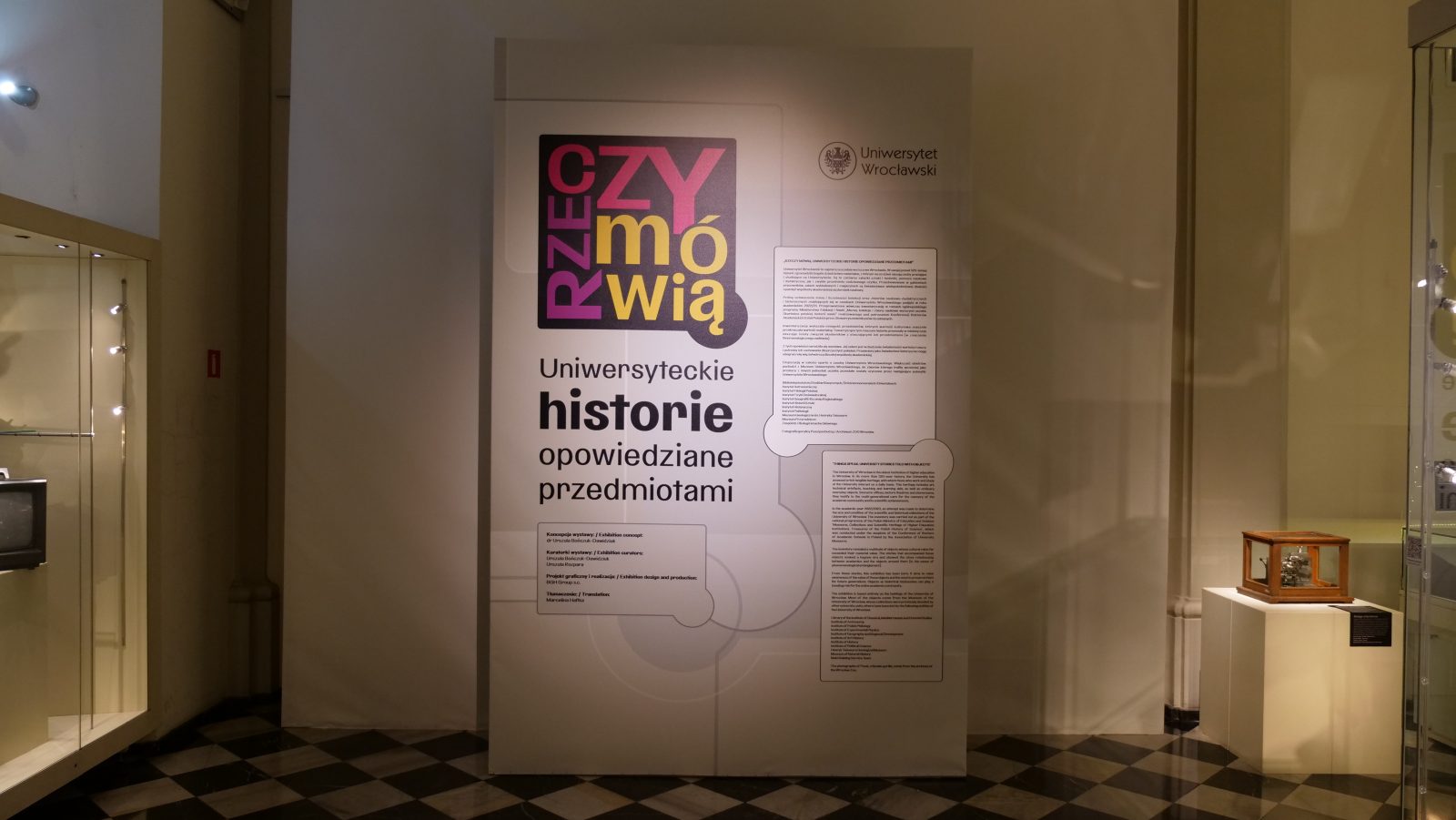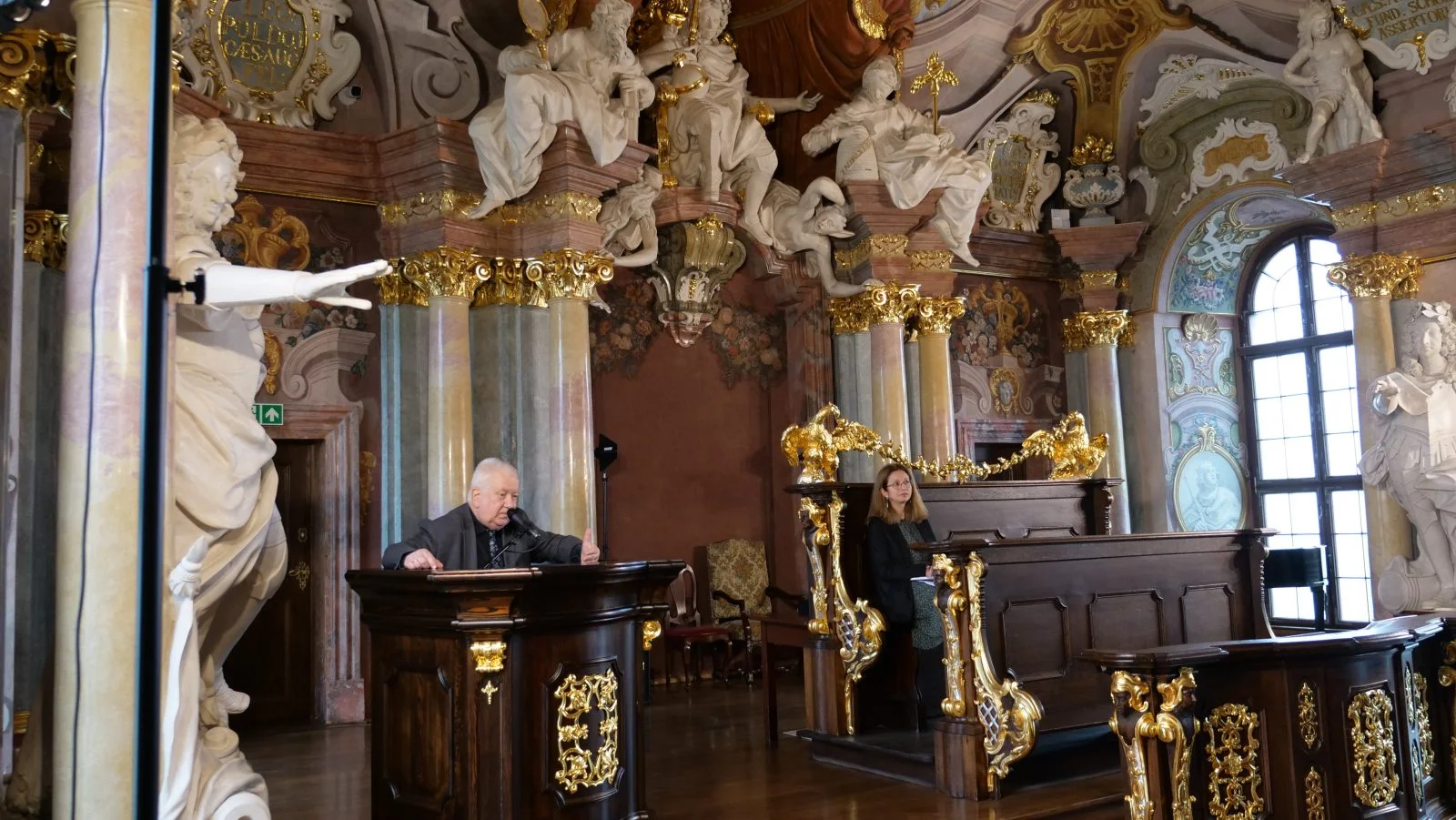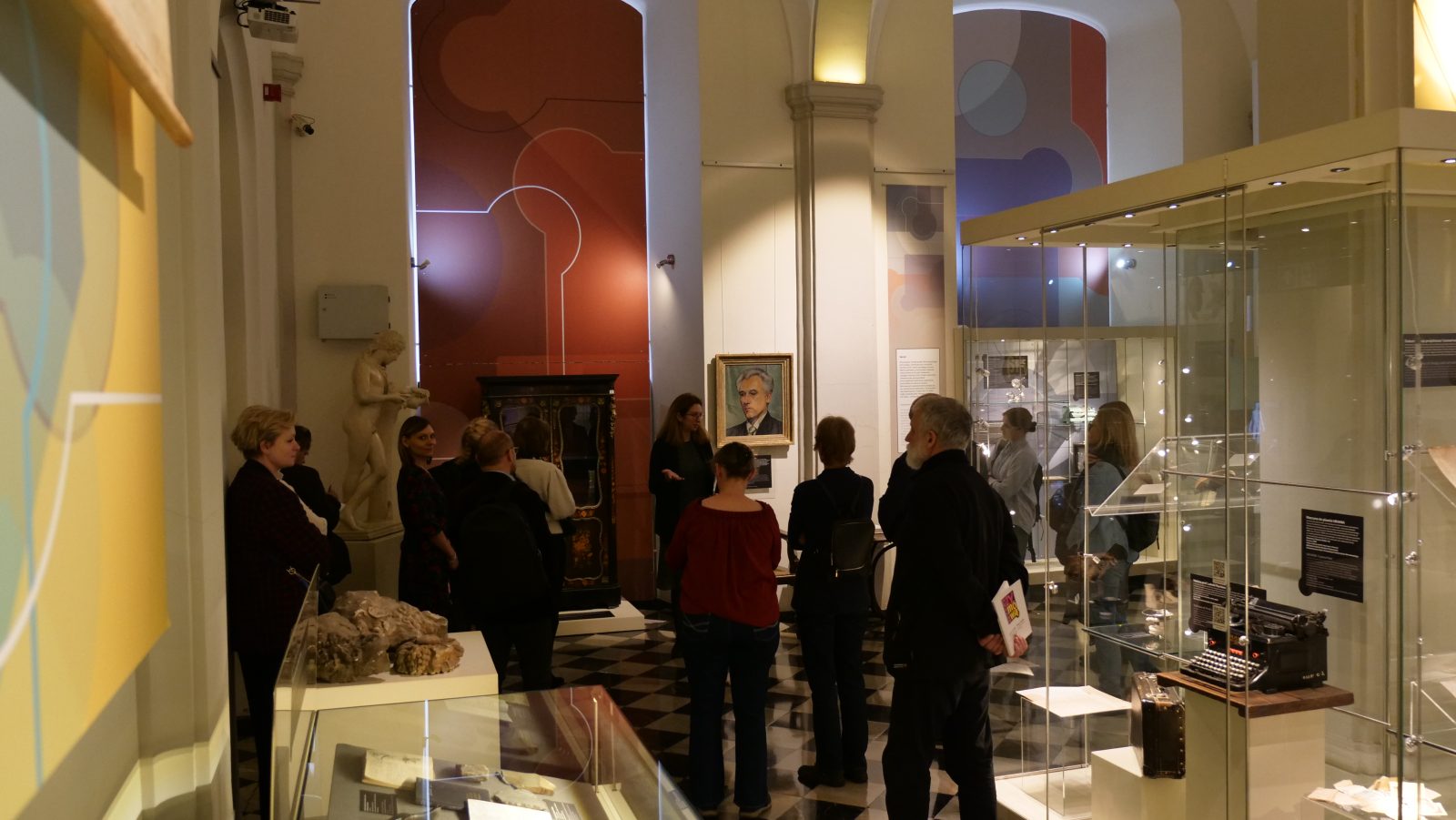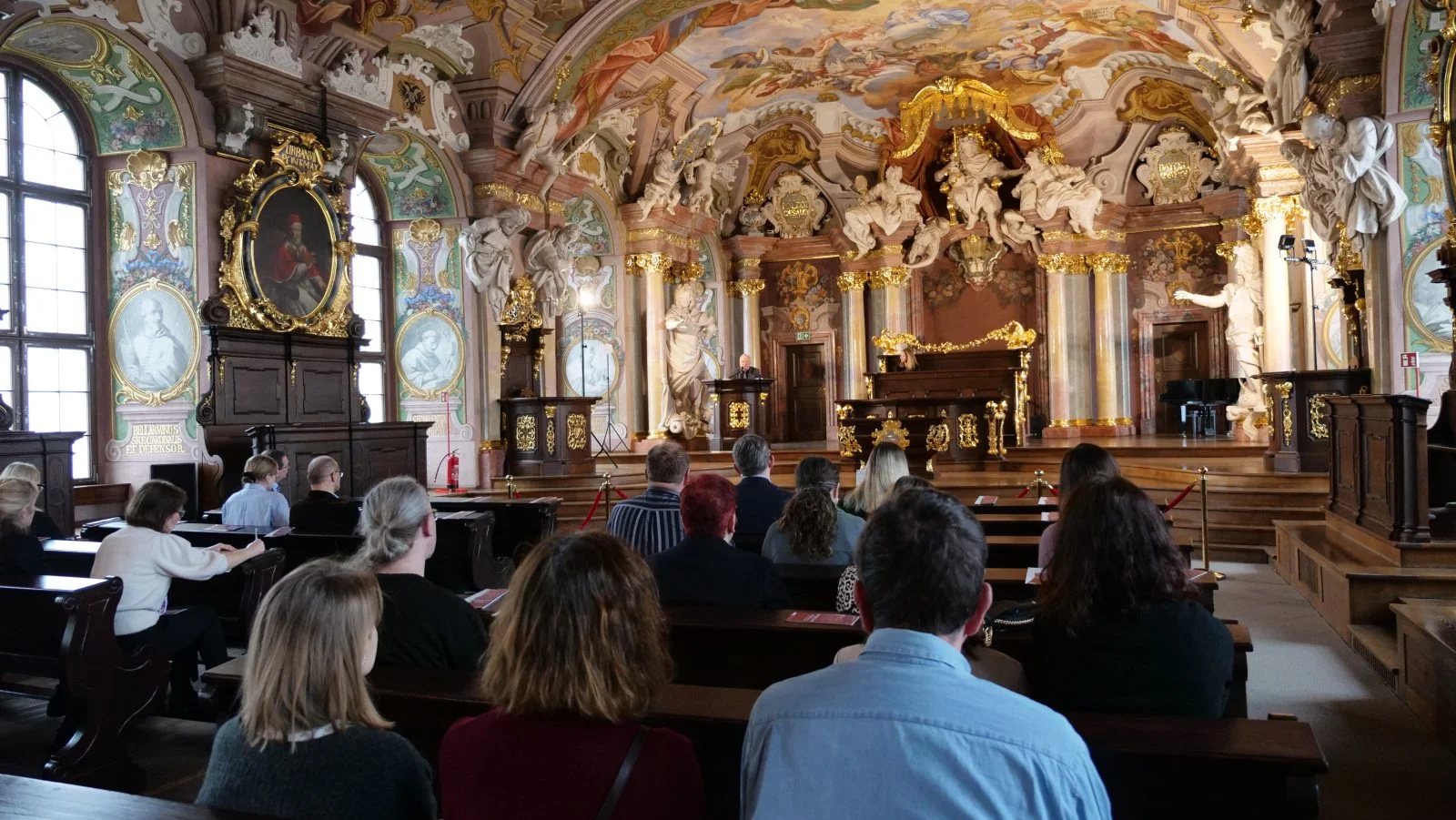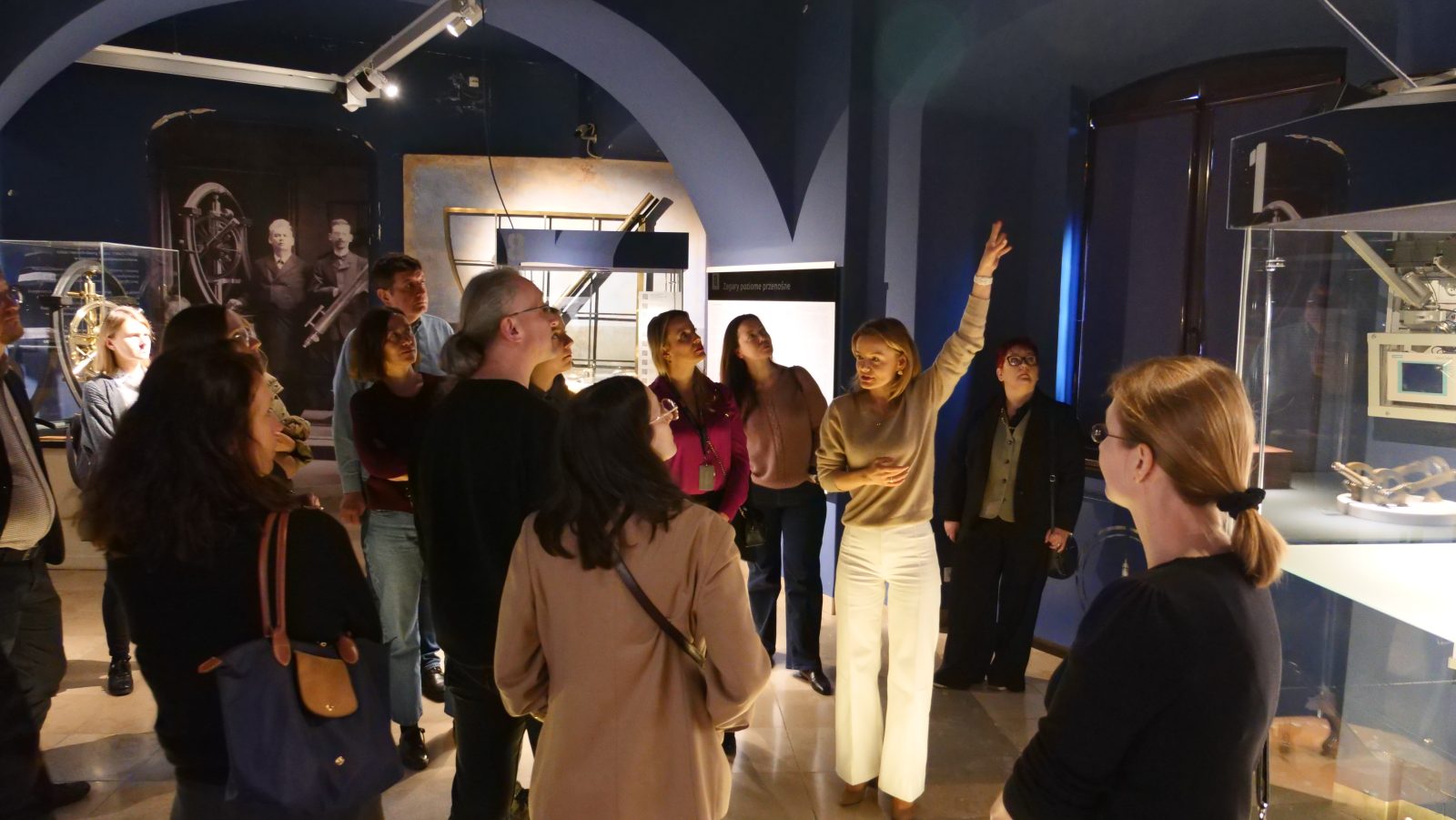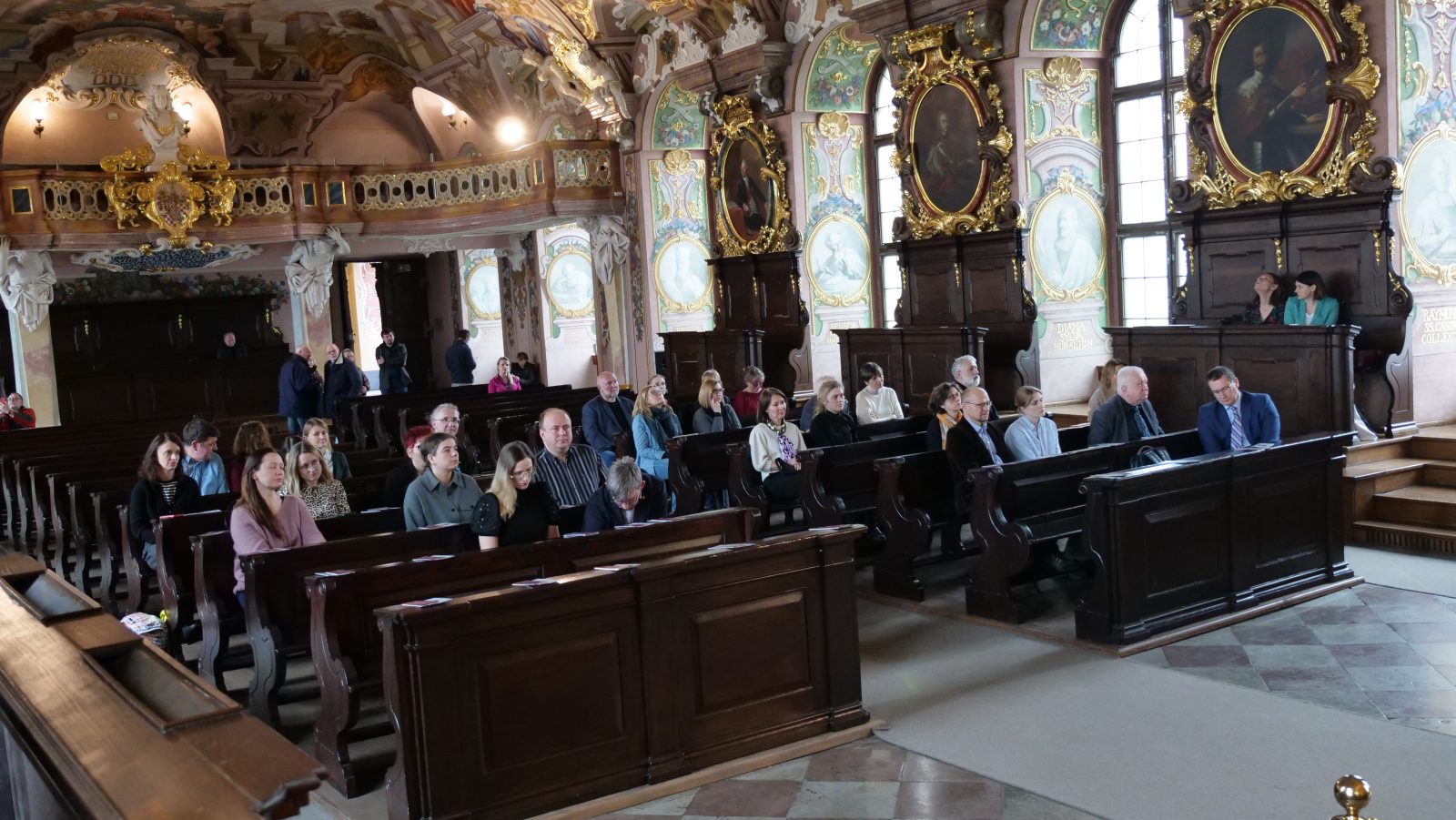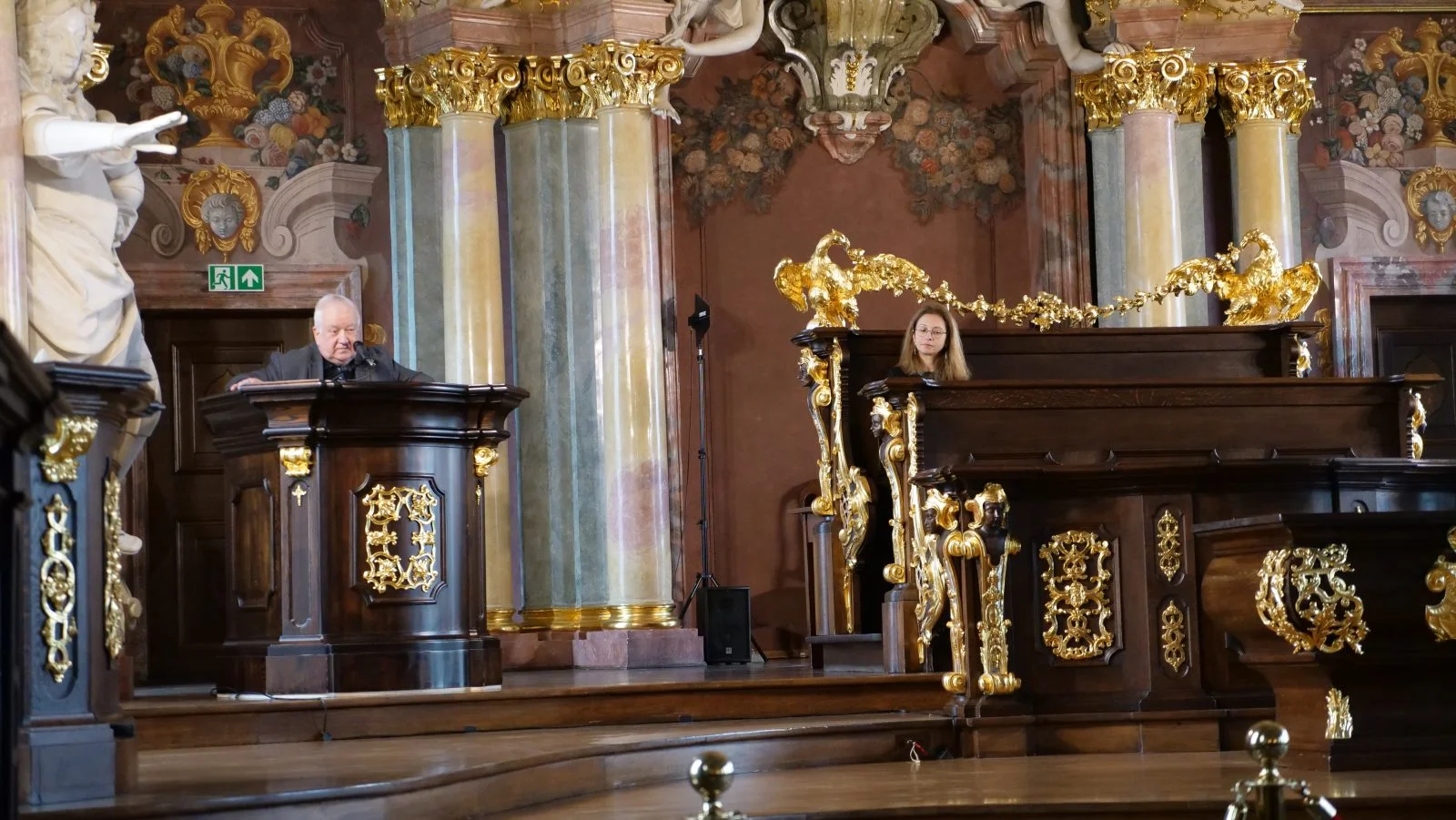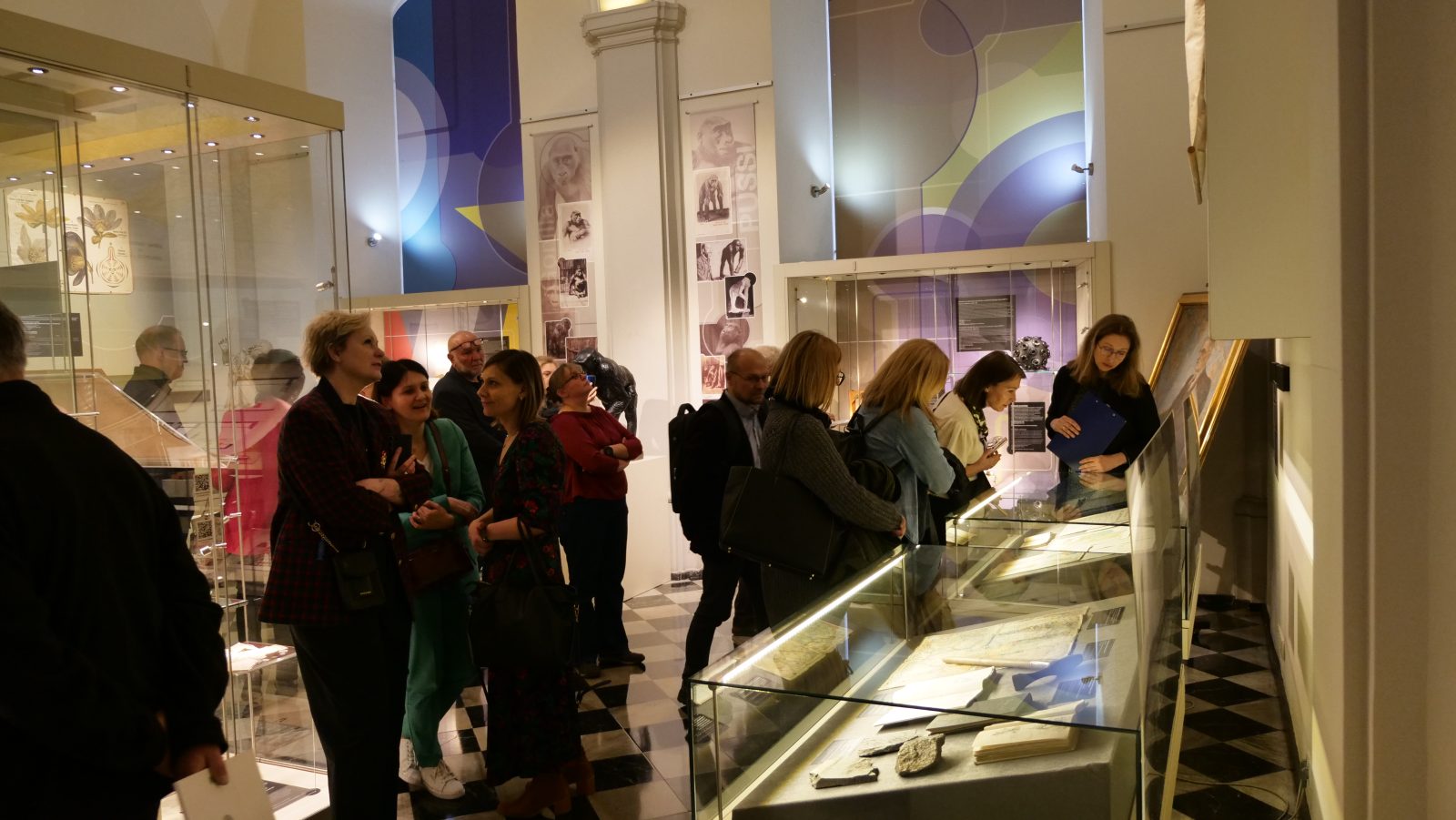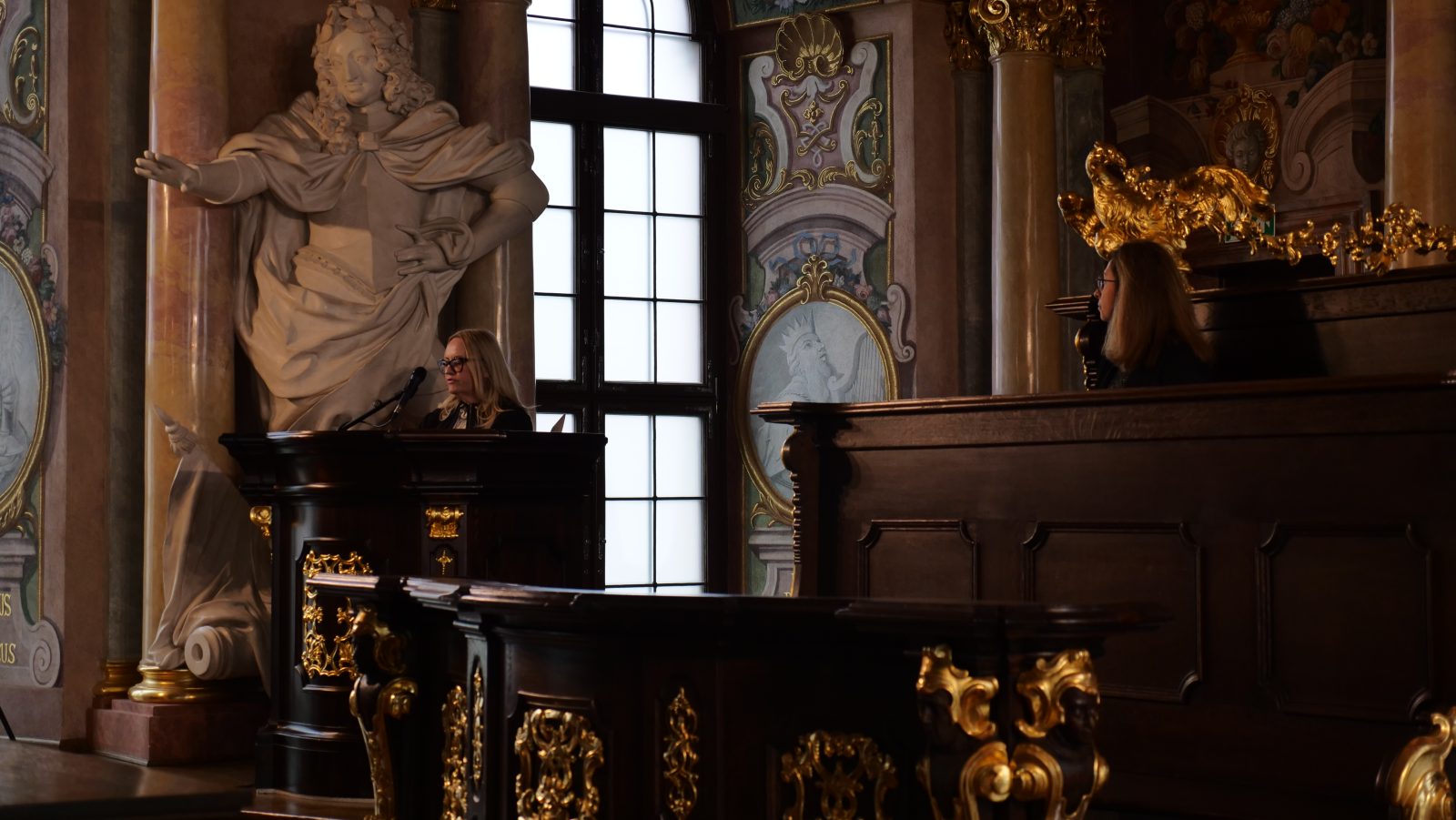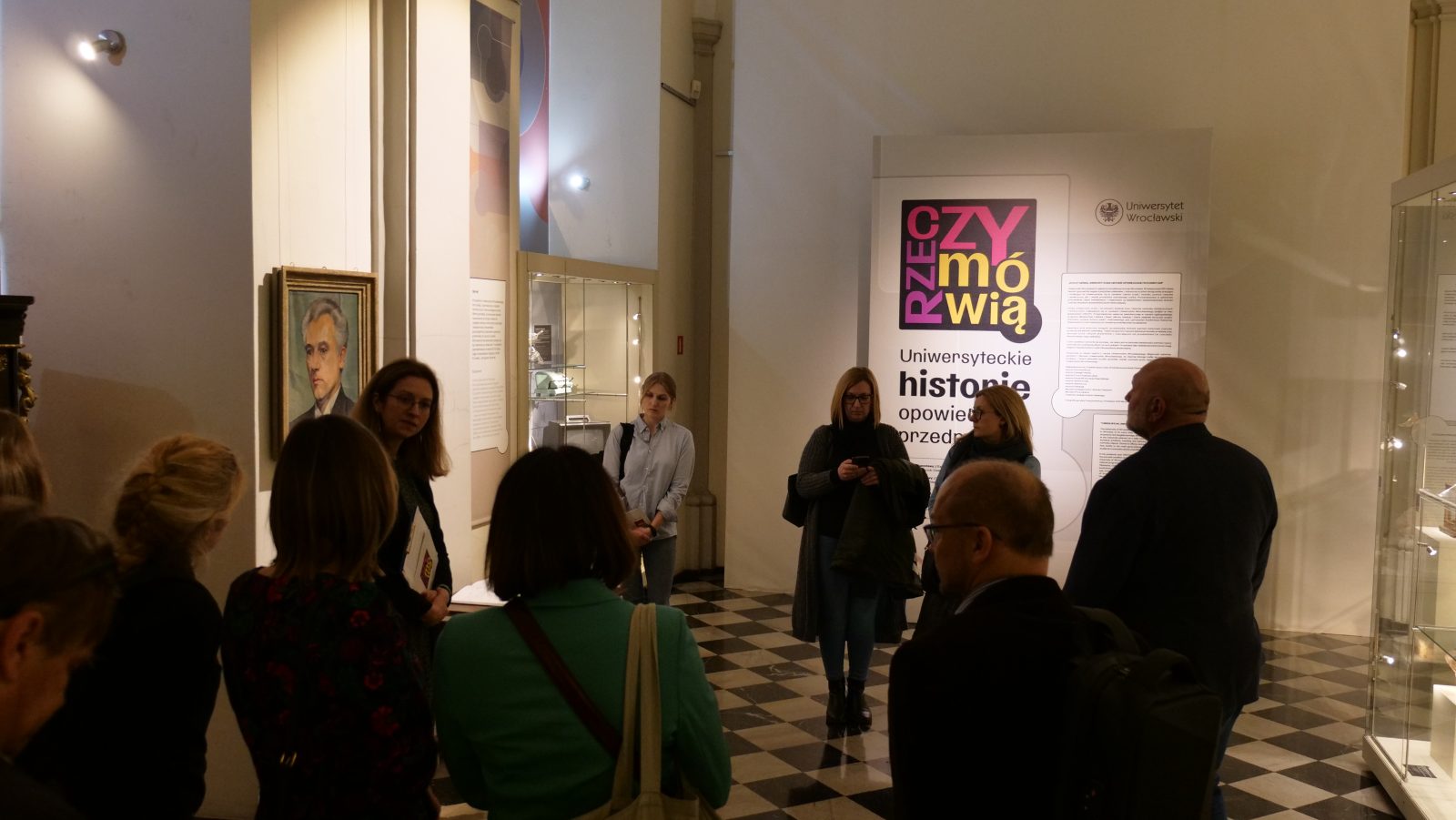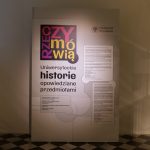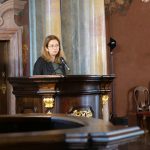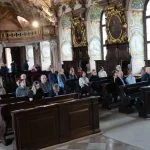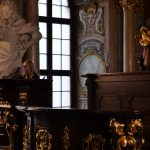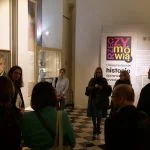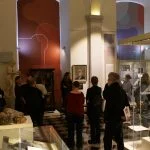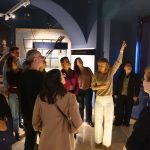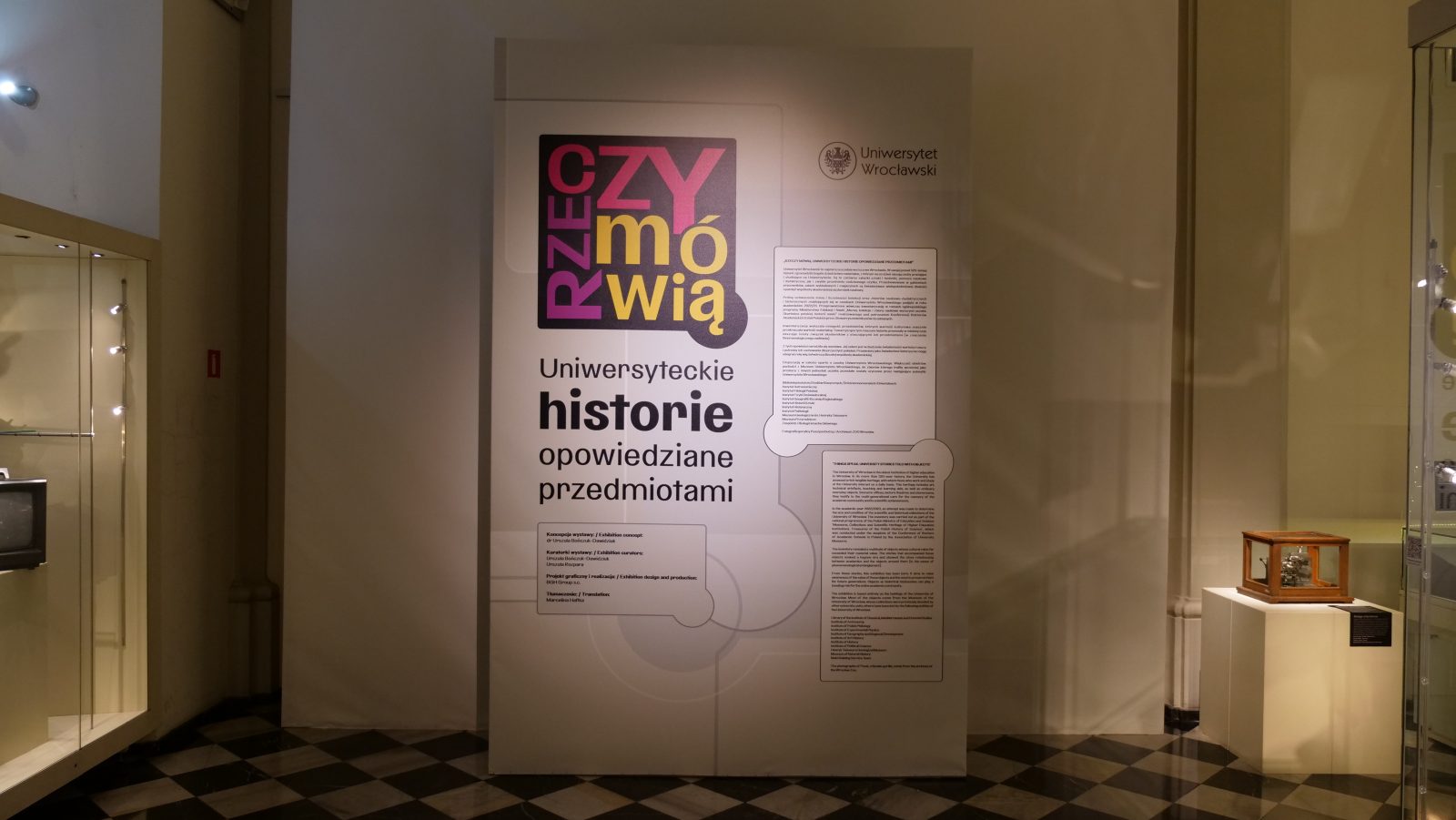
69,000 people listened to what the “objects” from the University of Wrocław had to say
The sculpture of the gorilla Pussi, the projector head made for the Luftwaffe, professor Rospond’s flashcards, professor Teisseyre’s notes from Lviv, and a 19th-century sewerage map from 1879 are just some of the objects featured in the exhibition “Rzeczy Mówią. Uniwersyteckie historie opowiedziane przedmiotami” (eng. Objects That Speak: University stories told through things), which has been viewed by 69,000 visitors at the University of Wrocław Museum since July 2024.
Museum since July 2024.
– We exist between people and things. Our exhibition has raised awareness within the academic community of our university about the community values reflected in both the tangible and intangible heritage of Wroclaw’s Alma Mater – said dr Urszula Bończuk-Dawidziuk of the Museum of the University of Wrocław at the exhibition’s closing.
From the inventory to the exhibition
The exhibition’s curator noted that it was inspired by the 2022–2024 project “Muzea, kolekcje i zbiory naukowe wyższych uczelni. Skarbnice polskiej historii nauki” (eng. “Museums, collections, and scientific holdings of higher education institutions: Treasures of Polish scientific history”), part of a program by the Ministry of Education and Science, coordinated by the Association of University Museums. The project aimed to collect data on the condition and scope of scientific collections held by Polish universities. The inventory covered museum, historical, and educational resources.
Dr Urszula Bończuk-Dawidziuk and mgr Urszula Rozpara from Museum of the University of Wrocław were inspired by research conducted in the University’s collections to prepare a temporary exhibition titled: “Rzeczy mówią” (eng. “Objects that speak”). The exhibition was a great success in terms of attendance. From the beginning of July 2024 to the end of April 2025, 44,932 people visited it with single tickets, and 22,962 people used family tickets. Additionally, approximately 1,500 individuals participated in curatorial tours, attended academic conferences, or were University of Wrocław employees and students who entered the museum free of charge. By the end of April 2025, this amounted to around 69,000 visitors – an excellent result.
The auditorium tells the story of science
…more precisely, of science and power. Professor Jan Harasimowicz, the Director of the Museum of the University of Wrocław, gave a brilliant lecture on what the interior design, paintings and frescoes of the Leopoldine Hall – the pride not only of the University, but of Wrocław as a whole – represent and tell us during the closing of the “Rrzeczy mówią” (eng. “Objects that speak”) exhibition.
– The auditorium speaks to us and gestures – through paintings, sculptures, symbols, and figures. What it tells us is a grand treatise on science, power, and society – said prof. Harasimowicz as he guided us through the history of the hall and the university. – Here, in the frescoes, sculptures, and paintings, we see 18th-century personifications of science and art. They reveal how divine wisdom was gifted upon us through geometry, painting, sculpture, pharmacy, and systems of statements. We see the categories of the sciences, their emblems, the professors’ honorary seats, and below them, students’ benches. All these elements speak – added the art historian, recounting the full story of the Leopoldine Hall in the broader context of Silesian history and its rulers since the University’s founding in 1702.
– Thanks to what our hall tells us, everyone understands that it is a temple of learning. There is nothing like it – it serves both the University and science. – anywhere else in Europe.”
Professor Harasimowicz added that thanks to the exhibition presented in the museum – under the Assembly Hall – many of these seemingly ordinary objects began to speak. On their own, they mean nothing – we made them tell stories, reveal meanings, and convey values, added the director of the University Museum.
– Rector Robert Olkiewicz supports our museum collections and this kind of exhibition, which tells the story of the academic community. I have been part of the University for thirty years, and I know that preparing such exhibitions together also helps people from different museums and departments get to know one another – and through this, we strengthen our shared identity, said Elżbieta Solarewicz, Director General of the University of Wrocław, at the closing of the exhibition.
Tales from the Fishcards and the Suitcase
Thanks to this exhibition, we’ve seen that objects once not considered antiques can have their moment – both in the museum and in the awareness of the university community. Seemingly ordinary, sometimes dismissed as mere “old things,” they have been, as cultural scholar dr Renata Tańczuk wrote, “recovered and rescued forming a microcosm of the University’s everyday life.” And in doing so, they tell the intertwined biographies of both people and things.
One example is the “planetary projector projection head” displayed in the exhibition. Manufactured for the Ministry of Aviation of the Third Reich, it was sent to the Breslau Fortress to train Luftwaffe pilots in astronomical navigation. However, there was no time to assemble it. A few years later, in 1951, it was constructed by the Astronomical Institute of the University of Wrocław employees and transferred to the Planetarium. Thanks to the University, it served for many decades for the “peaceful” observation of stars in Wrocław.
Another story is connected with the “Pussi gorilla sculpture,” which was recently restored and now delights visitors to the Museum of Zoology at the University of Environmental and Life Sciences. At the end of the 19th and beginning of the 20th century, it was the star of the Wrocław Zoo, captured in numerous photographs. The sculpture later inspired a bronze cast, which is still on display at the University.
There were also catalogs, or more precisely, 62 boxes of fishcards used by prof. Stanisław Rospond, a pioneer of linguistics and founder of the Department of Polish Studies at the University of Wrocław, to compile the Dictionary of Silesian Names between 1946 and 1967. Additionally, there is the suitcase of prof. Ludwika Rychlewska, a pioneer of classical philology, with which she arrived at the University. She brought it directly from Lviv.
Now collections „uwikłane” (eng. “Entangled”)
The next exhibition will open in the Sala pod Filarem (eng. Pillar Hall) on May 16, in just two weeks. After that, more exhibitions will follow:
16.05 – 2.11.2025 – Uwikłane. Dawne pozaeuropejskie zbiory etnograficzne Uniwersytetu Wrocławskiego – Sala pod Filarem. (eng. Entangled: Former Non-European Ethnographic Collections of the University of Wrocław – Pillar Hall)
The exhibition will showcase relics from the collection of the pre-war Anthropological and Ethnographic Museum in Wrocław. After 1945, they were partially transferred to the University of Wrocław and partially to the National Museum of Ethnography, where they remain to this day. These objects will be displayed in a contemporary arrangement, accompanied by commentary and complemented by works of contemporary artists.
22.05 – 23.07.2025 – Olga Kossmann’s diploma exhibition “Oddziaływania i zależności” (eng. “Interactions and Dependencies”) – Mathematical Tower
1 – 24.10.2025 – outdoor panel exhibition in the urban space marking the 80th anniversary of the University of Wrocław – Kuźnicza Street
from 15.11.2025 – jubilee exhibition celebrating the 80th anniversary – Sala pod Filarem (eng. Pillar Hall)
Translated by Zuzanna Sobkowiak (student of English Studies at the University of Wrocław) as part of the translation practice.
Photos: Sylwia Kościelniak
Text: Jacek Antczak
Publication date: 30.04.2025
